
program and website founded by Pierre Briant
The Achaemenid Persian Empire
from the Bosphorus to the Indus
river, from 550 to 330 B.C.
from the Bosphorus to the Indus
river, from 550 to 330 B.C.
search
Publications
Achaemenid museum and Iconographic resources
Textual sources
my space
You are not connected
I have my space
Please enter your identifiers to connect to your space
I forgot my password
You will be sent your password
Please type your emai.l
I create my space
Please type your email and a password of at least 6 characters to create your space.
Processing...
Change my password
Please type your password et a new one with at least 6 characters.
Change my email
Please type your password and a new valid email
back to folders

x
Créer mon espace
En créant votre espace vous pouvez mémoriser les fiches de manière permanente et les rappeler d'une session l'autre.
- Cliquez sur l'onglet "Je n'ai pas d'espace".
- Saisissez votre adresse mail et un mot de passe d'au moins 6 caractères.
- Cliquez sur le bouton "créer".
- Une demande de confirmation vous sera envoyée par mail. Vous devrez cliquer sur le lien interne afficher dans ce mail pour activer votre espace.
Modifier mes identifiants
Vous devez auparavant être connecté à votre espace.
- Cliquez sur votre email qui apparaît en haut à gauche du panneau "mon espace".
- Pour changer votre mot de passe cliquez sur l'onglet "Changer mon mot de passe".
- Pour changer votre adresse mail cliquez sur l'onglet "Changer mon email".
 Créer un dossier
Créer un dossier
Vous pouvez classer vos fiches dans des dossiers. Pour Créer un dossier :
- Cliquer sur ce bouton pour créer un nouveau dossier.
- Saisissez un nom de dossier.
- Cliquez sur le bouton "ok" pour créer le dossier.
- Cliquez sur le bouton "-" ou "x" pour abandonner la procédure.
 Renommer un dossier
Renommer un dossier
- Cliquer sur ce bouton pour éditer le nom du dossier.
- Saisissez un nouveau nom.
- Cliquez sur le bouton "ok" pour enregistrer la modification.
- Cliquez sur le bouton "-" pour abandonner la procédure.
 Supprimer un dossier
Supprimer un dossier
Cette action supprime toutes les fiches mémorisées dans le dossier.
- Cliquer sur ce bouton pour supprimer le dossier.
- Cliquez sur le bouton "-" pour abandonner la procédure.
- Cliquez sur le bouton "x" pour supprimer la procédure.
 Mémoriser une fiche
Mémoriser une fiche
Depuis la fiche :
- Cliquer sur ce bouton situé en haut à droite de la fiche.
- Dans la liste déroulante qui apparaît à côté du bouton, sélectionnez le dossier dans lequel vous souhaitez enregistrer la fiche .
- Le message "document enregistré" apparaît en remplacement de la liste pour vous confirmer que l'action a été effectuée.
 Déplacer une fiche
Déplacer une fiche
Depuis mon espace :
- Ouvrez le dossier où se trouve la fiche à déplacer en cliquant sur le nom du dossier.
- Cliquez sur la petite flèche en haut à droite du contenu du dossier.
- Dans la liste qui se déroule, cliquez sur le dossier de destination.
 Supprimer une fiche
Supprimer une fiche
Depuis mon espace :
- Ouvrez le dossier où se trouve la fiche à supprimer en cliquant sur le nom du dossier.
- Cliquez sur la petite flèche en haut à droite du contenu du dossier.
- Dans la liste qui se déroule, cliquez sur "supprimer ce document".
textual sources
-
-
texts by regions
-
-
-
-
Egypt
-
-
Ain Manawir
-
-
-
-
-
-
-
-
-
Ain Manawir ostraca
the Ain Manawir site in the Persian era
Located in the Libyan desert, 200 kilometres from the Nile Valley, the Kharga oasis stretches along a narrow depression that runs for 160 km. At its southern end, the Tell Douch zone has been excavated during campaigns undertaken by the Institut Français d’Archéologie Orientale since 1976 (IFAO).
From 1994, the team led by the late lamented Michel Wuttmann concentrated its research on the Ain Manawir site in order to excavate the remains of the village area that stood there in the 5th and 4th centuries BC. The land farmed by this community was irrigated by means of deep drainage galeries that could capture a perched water table held prisoner in the sandstone hill located south of the inhabited area.
|
map of Egypt © Achemenet / 2014 |
map of the Kharga oasis © IFAO / 2001 |
texts on ostraca written by the temple or private individuals
Excavation of the temple (MT sector) and the different dwelling sectors (MMA and MMB) and prospection conducted on the neighbouring site of Ain Ziyada (ZMA) have together revealed several hundred ostraca written in demotic script. Entrusted to Michel Chauveau (EPHE–IVe section), assisted by Damien Agut-Labordère (Collège de France then CNRS-ArScAn), the publication enabled an ensemble of 461 texts on ostraca (pottery shards) to be transliterated and translated.
These documents primarily concern the administration of the temple and private business. This documentary ensemble is exceptional for Egypt, both in terms of size – 460 documents are in a sufficiently satisfactory state to be published – and because it was discovered in a context.
an oasis village far from Persian power
The Ain Manawir ostraca (O.Man.) shed light on an aspect of ancient Egyptian society that has only been very scantily documented: the life of a farming community with relative autonomy from the royal powers. It seemed to be entirely organised around the local temple devoted to “Osiris-iou” (a variant of Osiris) and other religious institutions of the oasis (the Temple dedicated to Amun of Hibis or the temple at Qasr-el-Guheita).
Another particularity of this documentation makes it even more important for the rural history of Persian Egypt: while the ostraca discovered in the Nile Valley or at other oasis sites contain only short texts destined to be rapidly discarded (such as receipts or rough accounting documents), the Ain Manawir ostraca present the particularity of containing a large number of private acts (marriage and divorce decrees, acts of sale or rental); due to their importance, these were ordinarily written on papyrus. The life of certain local families and the itineraries of several individuals are therefore documented with rather exceptional precision.
The village community that lived at Ain Manawir in Persian times is without doubt one of the best known in the long Pharaonic history.
Ain Manawir ostraca O.Man. 5268: marriage decree
© IFAO
Damien Agut-Labordère (CNRS-ArScAn) / March 2014
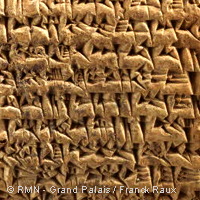
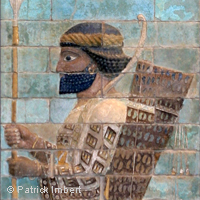
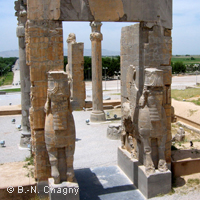
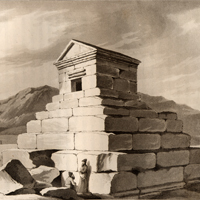
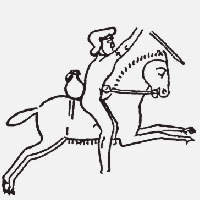
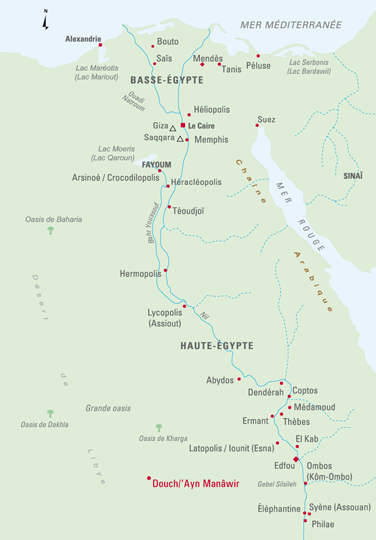
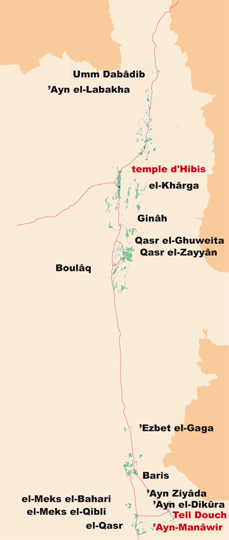

 rss
rss twitter
twitter